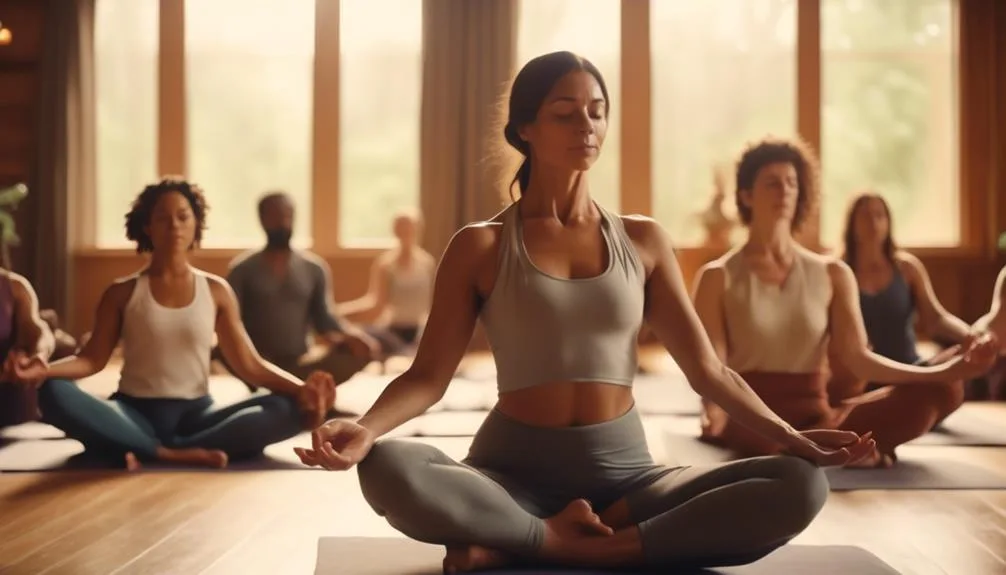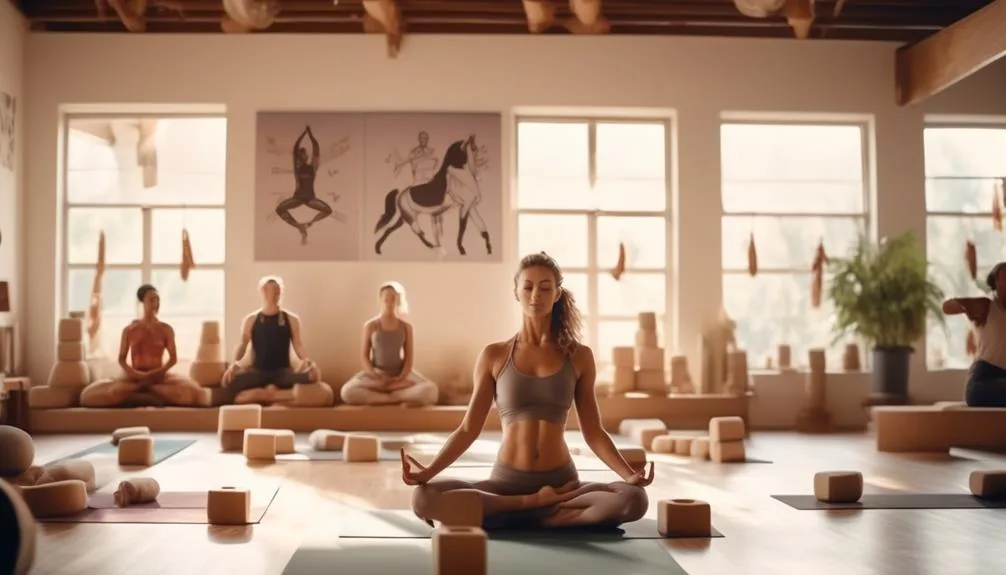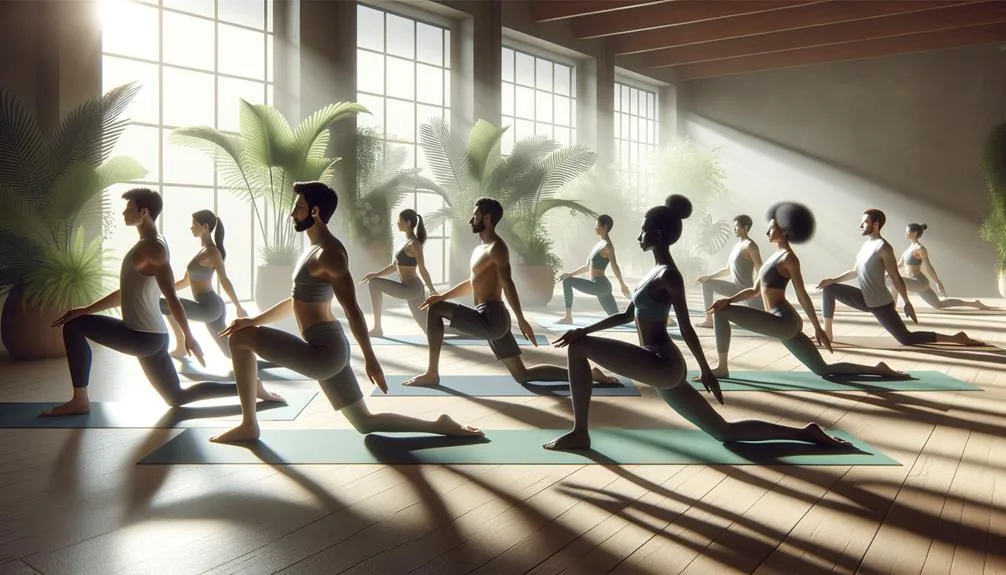In the realm of yoga, where the fusion of mind, body, and spirit seeks to elevate personal well-being, the Horse Pose emerges as a noteworthy asana with profound benefits for both strength and flexibility.
This comprehensive exploration into the Horse Pose, known for its capacity to simultaneously fortify the body's core and enhance the range of motion in the hips and groin area, aims to provide practitioners with a detailed understanding of its execution and inherent advantages.
Highlighting the insights of Dean Pohlman, a pivotal figure in the adaptation of yoga practices for improved back health and spinal recovery, this discussion not only underscores the significance of the Horse Pose in achieving a balanced yoga routine but also addresses common concerns and offers supplemental resources to aid in the mastery of this pose.
As we venture further into the nuances of the Horse Pose, let us consider its potential to transform our yoga practice, inviting a deeper sense of strength, flexibility, and overall well-being.
Key Takeaways
- Horse Pose, also known as Horse Stance or Horse Riding Pose, is a powerful yoga posture that can enhance lower body strength, improve flexibility in the groin and hips, promote core stability, relieve lower back tension, and encourage balance and overall wellness.
- Dean Pohlman, a renowned yoga instructor, has made significant contributions to the practice of Horse Pose and yoga in general. He has developed yoga programs specifically for back health, integrated yoga principles for individuals with limited flexibility, tailored yoga sessions for athletes and professionals, and provided educational resources for beginners to yoga. His teachings emphasize discipline, consistency, and mindfulness.
- Beginners can safely practice Horse Pose with proper guidance, and modifications can be made for individuals with limited flexibility and strength. It is important to differentiate Horse Pose from Goddess Pose, as they have similarities but also distinct differences in terms of foot placement and alignment. Props can be used to modify the pose and provide comfort, while listening to the body and avoiding overexertion is crucial to prevent strain and injury.
- To master Horse Pose, there are various supplemental resources available. Video tutorials can provide guidance on proper alignment, books offer modifications and variations, online courses focus on using yoga props effectively, workshops provide hands-on practice and feedback, and apps can help track progress and provide motivation.
Executing Horse Pose
To begin executing the Horse Pose, initially position your feet approximately 3 to 4 feet apart, ensuring a solid foundation for this strength-building and flexibility-enhancing posture. Turning your toes outward between 45 to 90 degrees is crucial for alignment and effectiveness.
Common mistakes include not spreading the feet wide enough or neglecting to press the knees outward, which can compromise the pose's benefits and potentially lead to strain. To accommodate different levels of flexibility and strength, consider modifications like adjusting the depth of your squat or using a wall for support.
Exploring variations, such as incorporating arm movements or deepening the squat, can further enhance the pose's benefits. Remember, the goal is progress, not perfection. Embrace modifications and variations to tailor the pose to your unique body and abilities, ensuring a safe and beneficial practice.
Key Benefits

Having explored the execution of Horse Pose, it is essential to highlight the significant benefits this practice offers for both strength enhancement and flexibility improvement. Integrating this pose into your routine can lead to notable improvements in your physical health and well-being, thanks to the combination of strength-building and flexibility-enhancing techniques it employs.
- Enhances Lower Body Strength: Targets and strengthens the thighs, glutes, and calves.
- Improves Flexibility in the Groin and Hips: Expands mobility through deep stretching.
- Promotes Core Stability: Engages and fortifies the abdominal muscles.
- Relieves Lower Back Tension: Reduces discomfort by stretching and strengthening the lower back area.
Incorporating Horse Pose into your practice encourages a harmonious blend of power and pliancy, offering a multitude of benefits for practitioners seeking balance and wellness.
Spotlight on Dean Pohlman

Delving into the world of yoga for men, Dean Pohlman stands out as a pioneering force, having established Man Flow Yoga, a platform dedicated to enhancing physical fitness through the integration of yoga principles tailored for men. His expertise and innovative approach have made a significant impact, particularly in areas of back health and spinal recovery.
| Dean Pohlman's Contributions | Target Audience | Key Benefits |
|---|---|---|
| Yoga programs for back health | Men of all ages | Improved spinal alignment |
| Integration of yoga principles | Non-flexible individuals | Enhanced flexibility |
| Tailored yoga sessions | Athletes and professionals | Increased strength |
| Educational resources | Beginners to yoga | Comprehensive understanding |
Dean Pohlman's yoga programs offer a holistic solution to those seeking to improve their physical well-being, emphasizing the importance of discipline, consistency, and mindfulness in achieving optimal health.
Addressing Common Concerns

Understanding common concerns allows individuals to approach Horse Pose with confidence, ensuring a safe and effective practice. Addressing these concerns provides clarity and peace of mind, enabling practitioners to fully engage with the pose and reap its benefits.
- Is Horse Pose suitable for beginners? Yes, with proper guidance on alignment and body awareness.
- Difference between Goddess Pose and Horse Pose: Goddess Pose involves a deeper squat and more active engagement of the upper body, while Horse Pose focuses on hip opening and lower body strength.
- Modifications for discomfort: Use props like blocks under the hands for additional support.
- Preventing overexertion: Listen to your body, adjust the depth of the squat, and avoid straining the knees by ensuring they align with the toes.
Supplemental Resources

To enhance your practice and mastery of Horse Pose, a variety of supplemental resources are available, offering detailed guidance and support for practitioners of all levels. These resources are designed to deepen your understanding of the pose, ensuring you achieve proper alignment, utilize beneficial modifications and variations, and effectively incorporate yoga props into your practice. Here's a table to guide you:
| Resource Type | Focus Area | Description |
|---|---|---|
| Video Tutorials | Proper Alignment | Step-by-step guidance on achieving the correct posture. |
| Books | Modifications and Variations | Detailed explanations of how to adapt the pose for different levels. |
| Online Courses | Yoga Props | Instructions on using props to support and enhance your practice. |
| Workshops | Hands-on Practice | Live sessions that offer personalized feedback. |
| Apps | Progress Tracking | Tools to monitor your improvement and keep motivated. |
These resources aim to provide comprehensive support, making your journey towards mastering Horse Pose both enjoyable and effective.
Frequently Asked Questions
How Does Practicing Horse Pose Regularly Impact Mental Health and Stress Levels?
Practicing horse pose regularly enhances mindfulness practices and emotional resilience, significantly reducing stress levels and improving mental health. This alignment fosters a serene mindset, encouraging a deeper connection to one's mental and physical well-being.
Are There Any Specific Breathing Techniques That Should Be Used in Conjunction With Horse Pose to Enhance Its Benefits?
Integrating specific breathing techniques, such as Pranayama and breath visualization, into Horse Pose practice can amplify its benefits, encouraging deeper focus, enhanced relaxation, and increased overall effectiveness of the posture for strength and flexibility gains.
How Can Horse Pose Be Modified for Someone With Knee Injuries or Chronic Knee Pain?
For individuals with knee injuries or chronic pain, modifying the Horse Pose with chair adaptations and prop support ensures safety and comfort. This approach allows participation without exacerbating conditions, promoting strength and flexibility development effectively.
In What Ways Does Integrating Horse Pose Into a Daily Yoga Routine Improve Overall Athletic Performance?
Integrating horse pose into a daily yoga routine enhances athletic performance through improved muscle coordination and endurance building, fostering a robust foundation for a variety of physical activities and promoting overall strength and flexibility.
What Are the Long-Term Effects on Posture and Spinal Alignment From Consistently Practicing Horse Pose?
Consistently practicing horse pose serves as a cornerstone for muscle growth and balance enhancement, leading to improved posture and spinal alignment. This disciplined approach fosters a strong foundation for overall body equilibrium and health.
Conclusion
In conclusion, embarking on the journey of mastering the Horse Pose embodies the pursuit of strength and flexibility, akin to a steadfast steed galloping towards the horizon of holistic well-being.
This pose, with its roots deeply entrenched in the rich soil of yoga practice, offers a sanctuary for those seeking to fortify their physical foundation while navigating the path to mental and spiritual equilibrium.
Through the guidance of experts like Dean Pohlman and the incorporation of this pose into daily routines, practitioners are equipped to harness the transformative power of yoga, unlocking the gates to enhanced health and vitality.

